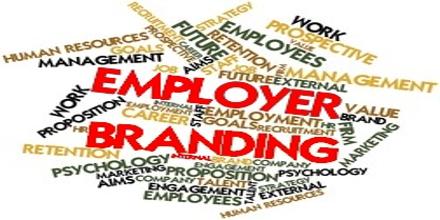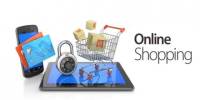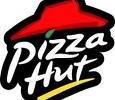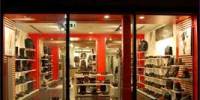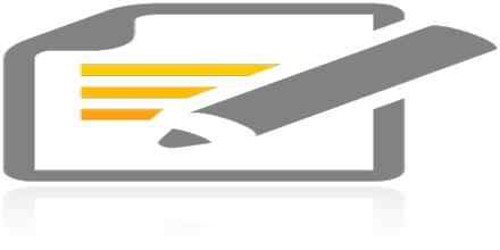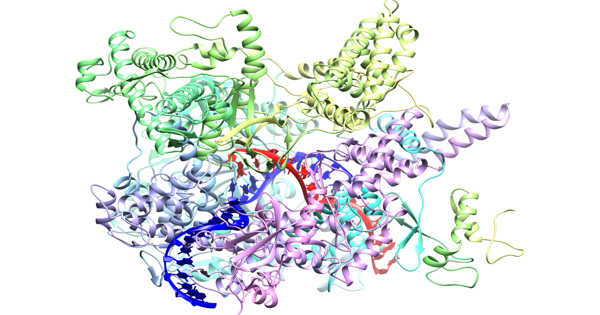Campus Engagement Sessions:
A Tool for Employer Branding in Unilever Bangladesh Limited
Unilever Global
Unilever is an Anglo-Dutch company, which owns a sizable portion of the world’s consumer product brands in food, beverages, cleaning agents and personal care products. Unilever has two parent companies: Unilever NV in Rotterdam, Netherlands, and Unilever PLC in London, United Kingdom. Both Unilever companies have the same directors and effectively operate as a single business. Paul Polman is the Chief Executive Officer and Executive Director to the Boards of Unilever PLC and Unilever NV. The current non-executive Chairman of Unilever N.V. and PLC is Michael Treschow. Unilever’s main competitors include Danone, Henkel, Kraft Foods, Nestlé, Pepsico, Procter & Gamble, Reckitt Benckiser, Sara Lee and S.C. Johnson & Son.
History of Unilever
In the 1890s, William Hesketh Lever, founder of Lever Bros, wrote down his ideas for Sunlight Soap– his revolutionary new product that helped popularize cleanliness and hygiene in Victorian England. It was an idea to make cleanliness commonplace; to lessen work for women; to foster health and contribute to personal attractiveness, that life may be more enjoyable and rewarding for the people who use our products. This was long before the phrase ‘Corporate Mission’ had been invented, but these ideas have stayed at the heart of Unilever’s business, even if their language – and the notion of only women doing housework – has become outdated. In a history that now crosses three centuries, Unilever’s success has been influenced by the major events of the day – economic boom, depression, world wars, changing consumer lifestyles and advances in technology. And throughout Unilever has created products that help people get more out of life – cutting the time spent on household chores, improving nutrition, enabling people to enjoy food and take care of their homes, their clothes and themselves. Today, Unilever still believes that success means acting with the highest standards of corporate behavior towards employees, consumers and the societies and world in which we live. Over the years the company has launched or participated in an ever-growing range of initiatives to source sustainable supplies of raw materials, protect environments, support local communities and much more. The following timeline shows how the brand portfolio has evolved. At the beginning of the 21st century Unilever’s Path to Growth strategy focused on global high-potential brands and the Vitality mission has taken the company into a new phase of development.
UNILEVER BANGLADESH LIMITED
The Unilever Bangladesh is consumer goods company, engaged in the manufacture and distribution of home care products, personal care products, and foods. It is a Joint Venture of the Government of Bangladesh and Unilever. Unilever holds 60.75 per cent and Government of Bangladesh holds 39.25 of the share.Products of Unilever Bangladesh are present in 98% of Bangladeshi household.
History of UBL
Unilever Bangladesh is a company that has its own history intrinsically built with the development of our nation and our culture. It has been part of the Bangladeshi household since the 19th century with the same intention of bringing cleanliness and convenience to households as we do today. Back then Sunlight soap was marketed through Lever Brothers India limited throughout the undivided India. Later on, Lever Brothers Pakistan limited started its operation in Bangladesh on a larger scale. In 1964, the soap manufacturing facility was setup in Kalurghat, Chittagong.
1964-1972: Productions started off with Sunlight soap and Lifebuoy soap. After the war of independence in 1971, Bangladesh became an independent country. At this time, Lever Brothers Bangladesh Ltd. was constituted with Unilever owning 60.75% shares and the Government of Bangladesh owning the remaining 39.25% shares.
1972-1980: Post liberation period evidenced accelerated growth for the company. Demand startedrising and the company continued its mission to meet consumer needs by producing quality soaps, introducing Lux – the beauty soap and Wheel. Launched in 1972 Wheel entered the merchandised laundry category, traditionally dominated by cottage soaps. It appealed to the consumers with unique care benefits for hand and fabric, a generic weakness in cottage soaps. It gradually became the secret ally of Bangladeshi women by extending the caring hand to ease her daily laundry chores.
1998-2004: These are the golden years in the history of Unilever Bangladesh as the company turned around from severe losses due to competitive backlash – to a company with 6 years of consecutive growth. Around the end of November 2001, the new personal products factory “Sankalp” in Kalurghat started production which helped meet the market needs from a shift on Unilever’s dependence on soaps to diverse personal grooming categories. This is also the era when Unilever Bangladesh introduced many exciting new products such as Pond’s face wash to end soap related facial skin woes or Lipton double chamber tea bags for more zest in our tea cups and the markets responded enthusiastically. In 2001, Unilever brought about a new excitement in the kitchen care sector with the introduction of Vim bar, the dish cleaning soap – a concept of convenience and common household habits combined together. In 2002 Rexona deodorant entered the market building in awareness about body odor problems and creating a new personal grooming habit in the country. The company’s soap formulations changed radically during this time to bring in world class standards without any price rises. Lifebuoy, the health brand has moved from just the hard-working men’s soap to reminding one, of the bond of love that binds a family in a healthy circle, free of germ s and sickness.
Unilever Bangladesh had a journey towards adding new momentum to its trade marketing and today Unilever products are available in 90% of the households in Bangladesh. In a company-wide move to come out from behind the great brands and be know n as Unilever worldwide, Lever Brothers Bangladesh limited officially changed its name to Unilever Bangladesh in December 2004.
Brands Building and Development Department
Previously, the Brands Team was expanded to Brands Building and Development. Currently, it has been merged for a better integrated approach. Marketing at Unilever Bangladesh offers many opportunities:
- To engage closely with consumers understanding their preferences and needs.
- To operate at a global, regional and local level across a broad range of products.
- To experience world-class professional development and acquire leading edge skills.
- To lead assignments that builds business and brand equity.
Here Unilever translates the global visions of a brand (includes brand communications, innovation and renovation) into a local market context, plan practical activity and make sure those plans are executed flawlessly, adding value to the brand and Unilever’s overall business.
Supply Chain Department
The Supply Chain Director (SCD) heads Supply Chain Department. From sourcing raw materials to delivering the end product, Unilever’s supply chain is at the heart of getting brands to customers. Its remit is shared amongst four divisions:
- Planning
- Procuring
- Manufacturing
- Distribution and Logistics
SWOT analysis of Unilever Bangladesh

Product Category and Brands of Unilever Bangladesh

Corporate Social Responsibility of UBL
Unilever believes in ambitious growth of the business while fostering a sustainable environment. UBL believes the two must be related and hence sustainability is placed at the heart of everything they do. Their philosophy of ‘Doing Well by Doing Good’ is captured in the Unilever Sustainable Living Plan (USLP).
In an uncertain and volatile world, UBL cannot achieve their vision to double their size without also reducing environmental footprint and increasing positive social impact. Launched in 2010, the Unilever Sustainable Living Plan is their blueprint for sustainable growth.
The Plan is helping to drive profitable growth for our brands, save costs and fuel innovation.
There are a number of projects other than Sustainable Living Plan that are being operated by UBL at the moment. Some of the initiatives under USLP in Bangladesh are:
Lifebuoy Lifesaver Program – a Lifebuoy initiative to reduce child mortality through hand washing with soap.
Oral Health & Hygiene Awareness Program – led by Pepsodent, this school-based activation program aims to reach 7 million people with its dental checkups and oral hygiene awareness.
Lifebuoy Friendship Hospital – launched in March 2002 in association with the humanitarian organization “Friendship”, the hospital is situated on a boat with a dedicated medical team and reaches out to people who do not have access to proper medical facilities.
PureIt – launched in 2010, PureIt is a water purifier which aims to provide safe drinking water to 2.5 million people by 2015.
Pollydut – through this project unemployed youth in villages have been incorporated into UBL’s distribution network to provide them with a sustainable livelihood.
Aparajita – in association with JITA Bangladesh, UBL has created a sustainable business opportunity for rural women in the form of Aparajita. Aparajitas are recruited to sell UBL and other company products, door-to-door. Over 7000 Aparajitas earn their living by selling UBL products.
Project Laser Beam (PLB) – PLB, a multi-million dollar, multi-stakeholder project between Unilever Foundation and WFP, was conducted in Shatkhira, Bangladesh from 2010 to 2014. The project worked across four pillars – Nutrition, Water, Health and Hygiene, and Livelihood, to develop a holistic model to eradicate malnutrition.
Tackling Malnutrition – 2 projects with Save the Children addressing child malnutrition have programs running in 4 divisions of the country. These projects are aimed at aiding the Government improve their malnutrition treatment infrastructure and provide direct interventions for effected individuals in terms of nutrition education and livelihood.
EMPLOYER BRANDING
Branding isnot just for favorite household products anymore. In fact, branding isnot just for brands anymore period. All good companies know they should be aware of their brand identity and what it says about the company at large. On an individual level, with the increasing importance of internet and social media, everyday workers are also becoming savvier about their personal brand.
A good employer brand strategy is like a good product brand strategy. It focuses on, among other things, potential profitability, reference groups, “product” features, and word-of-mouth. Recent research has found that only about 51 percent of companies have a working employer brand strategy in place. A further 24 percent are working towards a plan and 19 percent are revising theirs. That means that it’s certainly not the time to wonder if making an employer brand strategy is useful. Competitors are likely devising and implementing a branding plan that will help them scoop up all the top talent.
Understanding Employer Branding
Employer brand is an organization’s reputation as an employer. The term was first used in the early 1990s, and has since become widely adopted by the global management community.
Minchington (2005) defines employer brand as “the image of your organization as a ‘great place to work'”. The process of employer branding is concerned with talent attraction, engagement and retention strategies deployed to enhance a company’s employer brand. While the term “employer brand” denotes what people currently associate with an organization, employer branding has been defined as the sum of a company’s efforts to communicate to existing and prospective staff what makes it a desirable place to work, and the active management of “a company’s image as seen through the eyes of its associates and potential hires”.
In short, employer branding is the process of promoting a company, or an organization, as the employer of choice to a desired target group, one which a company needs and wants to recruit and retain. The process facilitates the company’s ability in attracting, recruiting and retaining ideal employees – referred to as Top Talent in recruitment – and helps secure the achievement of the company’s business plan.
In today’s highly competitive job market, employer branding is a crucial tool for attracting and retaining the right kind of talent. It helps you recruit highly-skilled and promising new employees and it enhances their loyalty by increasing their identification with the company. It also raises an organization’s visibility in the job market and makes it stand out from the competition.
Importance of Employer Branding in today’s world
According toUniversum, the top Employer Branding Company, there are several reasons why employer branding should be a vital management tool for every organization and company today. For instance:
Shortage of skilled labor: The competition for skilled workers has or will continue to increase day by day. Adding to this trend, there is also a clear shift in students’ preferences moving from technical degrees to non-technical degrees. Companies or organizations that are perceived to be attractive employers will have an easier time to recruit top talent.
More with less: a mantra coined during the economic downturn, there is high pressure to cut costs and increase productivity, which has made the need to get the right people in the right jobs even more crucial. Employer branding results in more successful recruitment and retention of top talent. Moreover, by properly communicating the reality of the work environment, companies are more likely to attract talent that fits their organizational culture, thus increasing the number of people with the right skills in the correct positions.
Growth & profitability: hiring and retaining top performers is essential for growth and to maintain a competitive edge. Employees who have the right skills, experience and knowledge, in relation to the critical areas of a business to drive growth, are strategically important. In addition, as developed economies move more towards the tertiary/service sectors, people become the primary asset. Employer branding increases the overall profit margin for a company.
Popularity: research on the talent market reveals that top graduates and professionals want to work for companies with great reputations; they often turn to family members, friends or colleagues for advice and approval when making a decision about which employers to consider. Moreover, the consumer/corporate/employer brands are intertwined: If a company is viewed as being an unpopular employer, it will consequently affect everything else and cause disequilibrium in the corporate ecosystem.
Strength: being an attractive employer provides a company or organization more bargaining power, as employees will want to work for them more than anyone else, even those that have rare or most in demand skills—irrespective of salary levels. An attractive employer can create for employees an illusion that their choices are limited outside of the organization, constantly maintaining an image of being the most desirable employer, giving the right reasons or incentives for their top performers to stay.
Employee Branding: Five Steps Model
Universum has created an employer branding model that identifies key processes that will work for any organization or company. The five step process:
Research: to understand where an employer is positioned in the employment market and to determine the appropriate action plan is fundamental. The four important factors, both internally and externally, are:
- Know how the target group perceives the employer
- Learn what the target group wants and needs from the employer
- Discover where the employer is positioned in relation to its competition
- Ensure that the research is updated regularly
Employer Value Proposition (EVP): the company or organization needs a unique employer offer. The EVP gives current and future employees a reason to work for an employer and reflects the company’s competitive advantage. Employers that manage their EVP effectively benefit from an increase in their talent pool and employee engagement, as well as a potential decrease in salary costs. Typically, less attractive employers need to pay a wage premium to get top talent whereas attractive employers do not. By analyzing the factors influencing the employer brand, and by defining a strong and true EVP, the employer will be able to deliver sound and consistent communications during the communication phase and develop an attractive, as well as unique, employer brand.
Communication strategy: the development of a communication strategy is always based on research findings and a well-defined EVP. The EVP is a useful tool used by HR, Marketing or Communications to be able to emphasize the most attractive factors and be consistent in the employer communications. Once an employer knows who they want to talk to and what to communicate, the employer then has to choose the most efficient and effective channels for reaching them. Choosing the right channels and understanding how best to target various groups is also based on research.
Communication Solutions: the aim at this step is to express the employer value proposition (EVP) by using the right words and images, so it becomes consistent with the corporate identity and branding efforts. The communication material should have the same look and feel irrespective of communication channel. Since organizations use many different channels, it is vital that the target groups recognize the organization and relate to the employer offer, no matter if they are being reached via the corporate website, reading an advertisement in the newspaper or taking part in an event. Employers should strive to develop consistency throughout their communication material.
Action: implementing all the steps and monitoring closely what works and needs to be adjusted along the way is the final stage. It is of great importance at this point that the organization sets targets on what they want to achieve with the planned activities in a clear and measurable way.
Employer branding in a nutshell is match-making, creating the perfect relationship between the employer and the employee. Employers should research their environment to know how their target group perceives them, understand what they want and need from them and understand their market position. They will need to develop or update their EVP to be consistent in their communications and help people in the organization be the brand. They will need to communicate or implement tactics to build or reinforce the desired employer image. Finally, an evaluation of all activities will need to be made to ensure that they are on track. Securing a talent pipeline and ensuring that companies have the right people on board is probably the most important task of any employer.
EMPLOYER BRANDING IN UBL
In many respects, UBL thinks of Unilever Bangladesh as a community, rather than an organization. The community is shaped and led by its people, who operate creatively within a framework of shared values and business goals. Because people are fundamental to the way UBL does business, they’re at the centre of everything it does. Their professional fulfillments, their work/life balances, their ability to contribute equally as part of a diverse workforce… these are all issues to which UBL gives priority. In order to fit in the correct mindsets in the organization, UBL has a very strong Human Resource pillar which focuses on pooling talents through different tools. They believe in engaging with talents through different activities in order to find the right recruits for the organization.
Unilever Bangladesh limited, through-out the year, continues to reach out to different educational institutions to interact with students. They keep on adding to the list of institutions, as well as modifying the ways to reach the students with a long-term impact in their memories and minds. Unilever Bangladesh has been successfully engaging in different campus engagement sessions for years in order to improve the learning opportunities of the students. According to the campus research on different employer brands amongst the students done by AC Nielson firm, Unilever Bangladesh has ranked as the number one employer of the year 2013. UBL believes to improve the scope of learning the real life implementation of theories for students in order to ensure better future leaders. They believe if they are capable to do so, their employer branding will automatically be on top. The ranking always plays a secondary role in their objectives. Their first, and foremost goal is to ensure better leaders for future.
Campus Engagement of UBL’ 2014: An important tool for EB
In 2014, UBL have been leading with five different types of campus engagement sessions in order to brand Unilever Bangladesh as one of the top employers in the country. They are:
BizLearners Program: BizLearners is a program in which senior managers of Unilever Bangladesh Limited visits an educational institution and takes a session on topics that can be helpful for the final year business students. It was first introduced in 2014 by UBL. The Tagline for the event is “Learn from the Experts”. It is basically a guest lecture session focused on expertise building on a specific function. The target group of audience was the 4th year students from Marketing, HR, Supply Chain and Finance departments.
BizLeaders Program: BizLeaders is also a new initiative taken by UBL to engage and motivate students of the final years. With the tagline “Learn to Lead”, BizLeaders was a motivational and inspirational event for final year students. In this event, the students had the rare opportunity to learn the success stories of one of our leaders from themselves. One of the directors of UBL visited one or more of the key campuses in Dhaka and shared their experiences with the final year students. It was followed by an extensive question and answer session with the students which made the event even more interactive.
Unilever Leadership Internship Program: Every year Unilever Bangladesh provides few talented students from key campuses of Bangladesh with Internship opportunity ahead of all other organizations. This opportunity is provided once a year. Usually during May-June every year, UBL selects interns for the upcoming September- May session at once. Getting an internship opportunity with a company like Unilever is very lucrative and students wait for this time of the year.
Unilever BizMaestros: Unilever BizMaestros is a business competition for final year undergraduate students. This competition offers a platform for the students where they can engage in real life business challenges. For the several years, this competition was solely based on businesses cases addressing different Unilever brands. The modality of the competition was basically the traditional case presentation through power point slides. But nevertheless it gave participants the opportunity to show their creativity through some manner. From 2013 Unilever Bangladesh has taken the competition to the next level and they are bringing something new every year. The competition is not limited to business cases only; rather it gave students an exciting experience of the business world. New and challenging tasks are incorporated which enabled the students to understand the challenges of real business and at the same time come up with innovative ideas.
Unilever Future Leaders Program: UFLP is the Management Trainee recruitment program for Unilever. The Unilever Future Leaders Program is about developing tomorrow’s leaders, today, and that too in a fast pace. It’s designed to grow an individual into leader through hands-on learning alongside world-class experts. Graduates are to be hired into a function and get the opportunity to develop leadership skills by working on live projects while being into a job rotation which offers them all the experience they need to become ready for their first managerial role.
INTERNSHIP PROJECT: CAMPUS ENGAGEMENT PROGRAMS
During the period of May’2014 to August’2014, three types of events were arranged to penetrate the campuses. In most the cases, BizLeaders or BizLearners was tagged along with the internship recruitment program. There were two exceptions: One Bizlearners session on HR in North South University and One BizLeaders session in Dhaka University- IBA by Brand Building Director of UBL.
Behind the Scene: Preparations
The basic steps of preparation for all the campus sessions were similar in process. Although its not a step by step process and mostly the steps are done simultaneously, it can be identified as below:
Step-01: The Timeline Determination
At first, the Leadership Development, along with the HRD, decided the probable timeline of the event, by which they can start and finish the different campus visits and the stages of events (if applicable). For BizLeaders, BizLearners and ULIP 2014, the timeline, after proper scrutiny, was decided as June 2014. In this one month, the UBL team decided to visit 8 campuses, and finish their yearly intern recruitment process at the same time. During the planning of the timeline, the month of Holy Ramadan played a tricky role as it was holiday season for some key campuses at the time. In addition, the month was very close to midtermexaminations for campuses, which also posed a critical complexity in the timeline assessment.
Step- 02: Contacting the Authority of the campuses
After deciding the probable timeline, it is time to let the authority know about the description of the event, with the value addition for the students. Career service offices, or department heads are the key contact person for the campuses. However, as UBL has long relation with the campus authorities, it never becomes a trouble to convince the authority regarding holding any event inside their campus. To approach the campus authority, the team starts through verbal and then written formal communication, with the probable date and time mentioned in the letter. The university authority is the final decision maker in deciding the time, date, and venue for the event in their premises. The final confirmation should be in a formal letter from the campus authority end, which can be changed with mutual consent from both the parties.
Step- 03: Attracting the Crowd
An event is successful only when the program venue is full to the brim with the target audience. It is the duty of the UBL team to attract the target audience. UBL mostly arranged the programs for the final year students. There are different types of promotions that are done by UBL in campuses as per required and as required for effective communication:
- Social Media is now-a-days the most effective way of attracting the students in any event. Unilever Bangladesh has an official Facebook page “Unilever Careers” and they are very active through this page. Every event and updates are posted in this page in advance. With the help of campus contacts, UBL manages to spread the news of the events to their particular audience as well.
- Posters are also effective for a lot of campuses. Mostly the time, date, venue, and the description of the guest speaker was used in the posters.
- There are some campuses, like East West University, and Independent University, where the best way of communication Wall banners and those were deployed in the respective campuses.
- In NSU and BRAC University, central places in the campus were brought under communication by deploying Cut-outs and Stand Alones.
- Where target audience are less scattered and small in number, like KU and JU, communications were done with the help of class representatives, faculties and Facebook events.
Before any type of communication inside premises of a university, formal permission was taken from the authority in written to avoid complexities. The promotional materials were designed by Ogilvy and Mather and were made and deployed with the help of Procharona, the event partner.
Confirmation of the Guest Speakers
As the events of 2014 by UBL were designed as seminars, guest speakers played a vital role. The leaders and senior managers have busy schedules, so it was made sure that the date to the leaders were properly communicated and appointment was perfectly made in order to avoid any unwanted last minute changes in guest speakers.
Laying out the Blueprint for ULIP
First the modality for Unilever Leadership Internship Program 2014 was finalized. Unilever is known for its creative and unique ways of tests which changed every year. This year was no difference. This year, the Leadership Development Manager wanted to focus on the upcoming UFLP test for the betterment of the students. To give them an essence of that test, it was decided to take the internship test likewise.
Previously the test took one day in the campus, where an in-tray exercise would be taken, followed by an interview with the LDM and Recruitment Manager of UBL. This year, the modality was completely reorganized. This year, the test had 3 stages. First, the students had to register by answering two questions: “Your Biggest Achievement so far in life” and “Your
Extra Curricular Activities”. On the basis of the answers of the questions, the first screening was done who later sat for the written test.
The written test consisted of 20 MCQs comprising Logical Analysis, Numerical Analysis and English proficiency questions. The top 6 to 12 scorers from each university campuses were later called for the final round in the Corporate Office of Unilever Bangladesh Ltd. for a Group Discussion Round with 6 members in each group. All the rounds were carried out amongst the same university students, not as inter-university competition. After GD before three HR Managers in UBL, 2 to 6 interns from each university were selected as interns for 2014-2015 session.
This was the general blueprint for the ULIP except for KU. As it was not possible for the students there to visit CO of UBL for GD, they had t face a phone interview with the LDM instead of the GD.
The Campus Event Day: Step-by-Step Breakdown
After the dates were confirmed, and the guest speakers were finalized, it was time to design the entire event. To avoid chaos in the venue and to ensure smooth and flawless operation, every detail were predetermined. A representative from the campus authority would start the program and introduce the guest speaker. The speaker then conducted the lecture session, followed by the Q&A session from the students. Then the LDM would take a brief session on the opportunities and in UBL and their HR practices. She also answered queries from students. Later, the list of the screened students was announced who would sit for the written test on the very day. Refreshments were also arranged to wash away the tiredness of the long session.
The Final Test
The final test for the potential interns was the GD. A case on Pond’s Age Miracle was given to the students and they were asked to play the role of three marketers, a dermatologist, a feminist, and a beautician. The GDs were very effective in finding out the logical minds with convincing skills, negotiation skills and public speaking capabilities. Later, the groups were lucky to receive different tips and tricks of nailing a GD in their future job-hunting phases from the HR experts of UBL. The selected candidates were later called to confirm their selection, and were invited to a rare opportunity of being welcomed in UBL family by the Chairman and MD, Mr. Kamran Bakr, himself.
The Grand Finale
The final day was in August 02, 2014, when finally selected interns were invited in UBL head office. They were all formally dressed, all ready to meet the Chairman and MD of UBL. They were first briefed by the LDM regarding the safety rules. Then the Chairman took over the session. The interns introduced themselves and the MD took a great interactive session. He gave wonderful advices and finished the ceremony by handing over the welcome gift and internship confirmation letter to the selected interns. The day and Unilever Leadership Internship Program 2014 came to an end after a nice tour of the Corporate Head Office of Unilever Bangladesh Ltd.
THE FINAL WORDS
Employer branding is more than a buzz word, it is an important topic for companies. New employee recruitment and existing employee loyalty have increasingly become key business goals due to the current lack of qualified staff and demographic changes. The top talents are picky today. They can choose from many job opportunities, and they know it. They can apply for any job they choose. The employer branding should navigate all top talents to organization’s career pages. However, it is not that simple. The employer branding can become a true hydra if the branding strategy had not been defined properly and is kept as small as possible. The recruitment strategy should be always in the center. It has to define the way the organization communicates with external and internal target groups. As the top employer in Bangladesh, Unilever has always been ahead in their games. People are considered as their greatest asset. So they believe they have the responsibility to build a better learning arena for the students. Unilever Bangladesh is the top employer brand in 2013 however they needto work comparatively less to retain the position. The leadership development team believes that campus and student engagement is the strongest tool in retaining the position in the competition of the employers. If they are providing students with the opportunity to develop their skills, knowledge and inspiration, UBL believes the company appeal to students will increase by default. If further research could be done on the impact of campus engagement sessions on the perception of the students, Unilever Bangladesh can grab more lucrative place in the mind and heart of the talented graduates by engaging in more educative events. So far, they are at the forefront from their fellow competitor organizations and they need to continue to find innovative ways to leap further to the lead.
